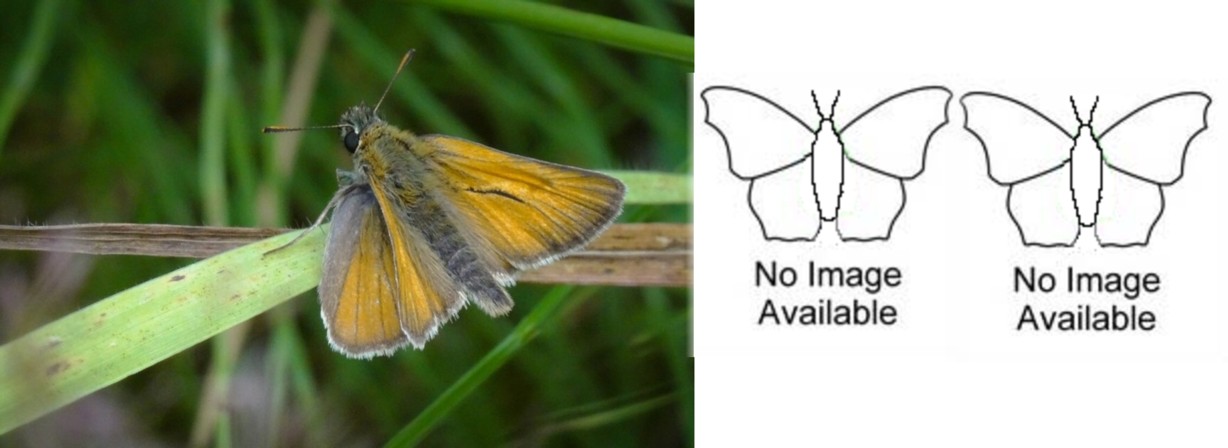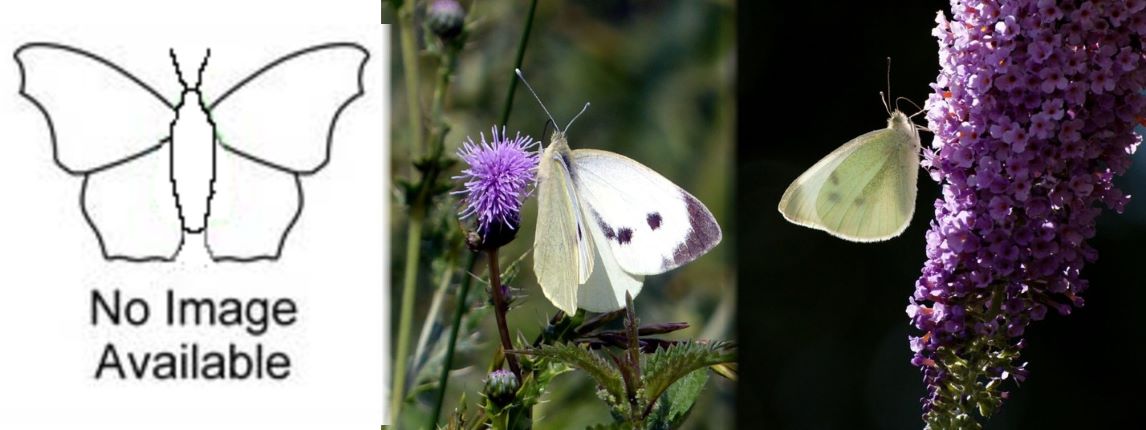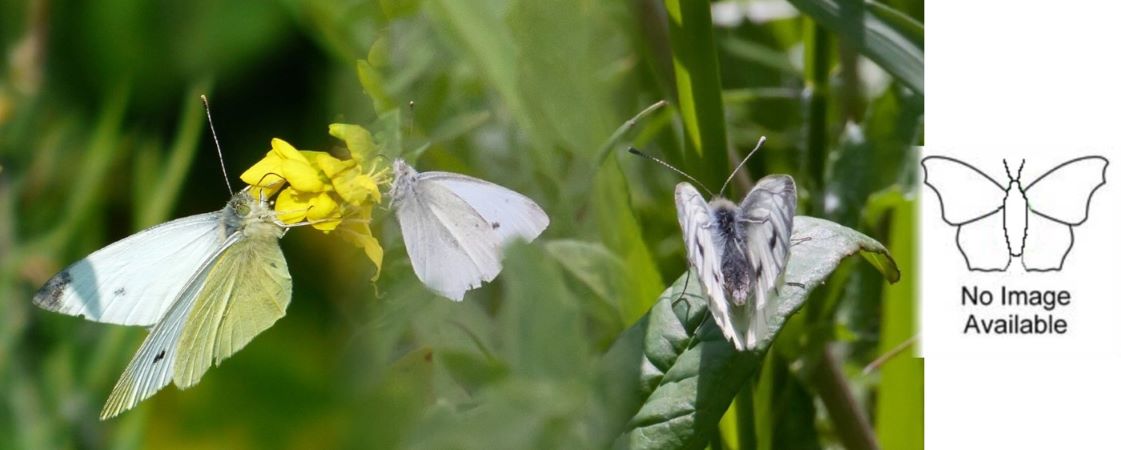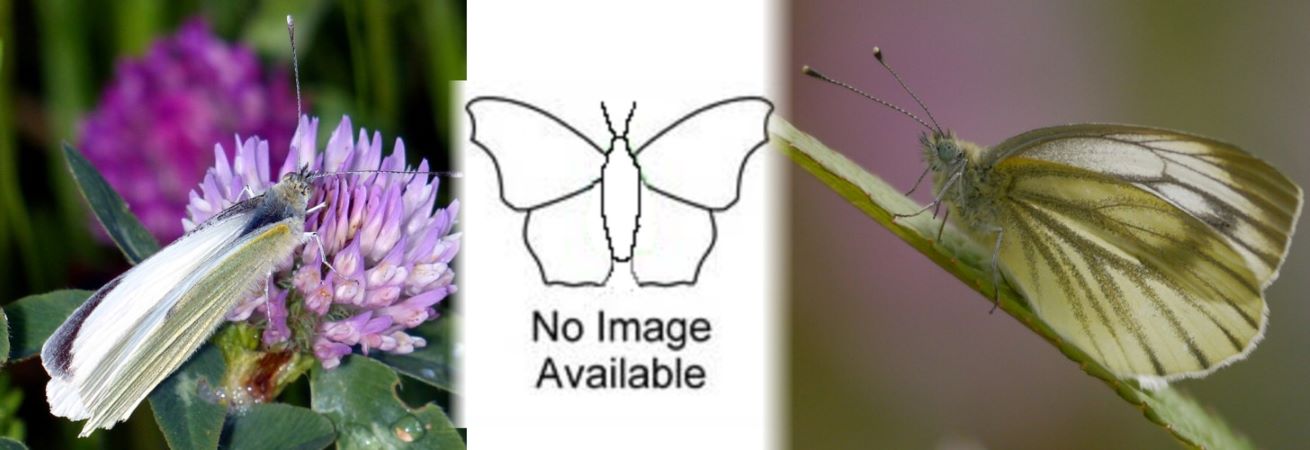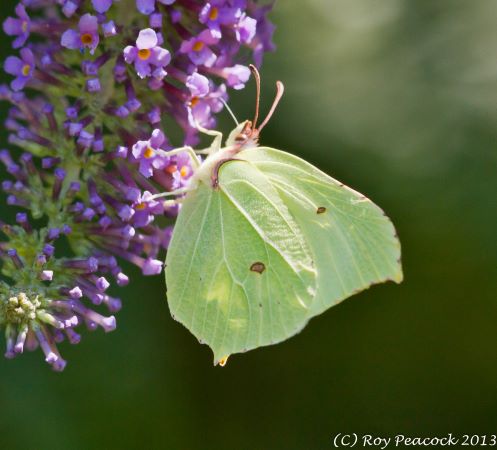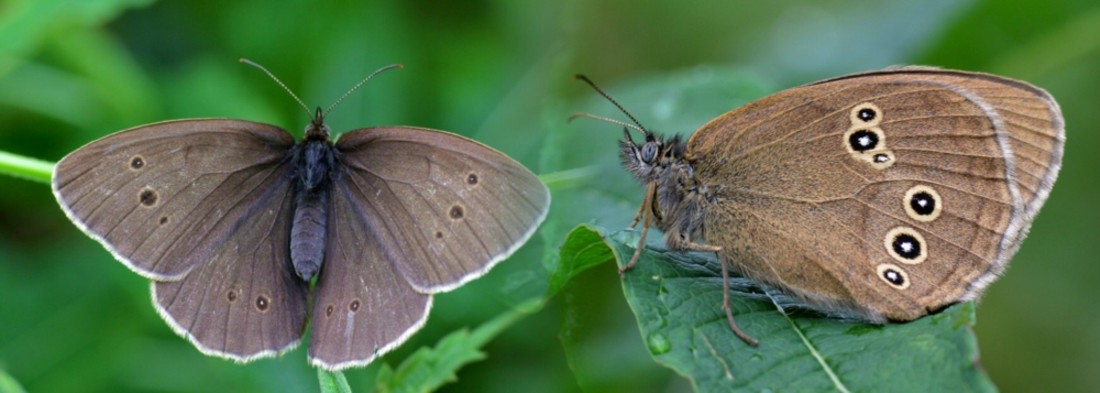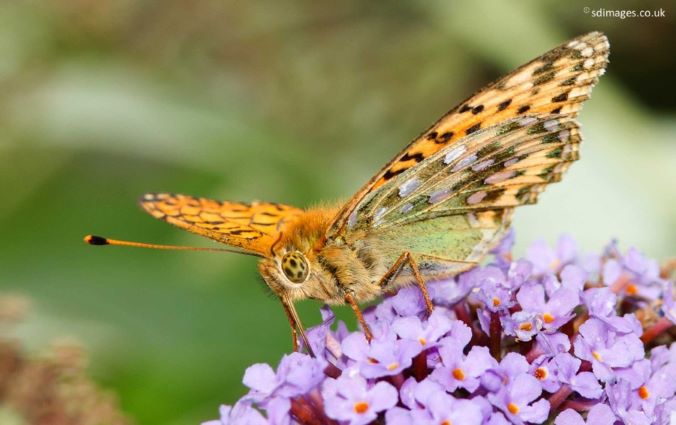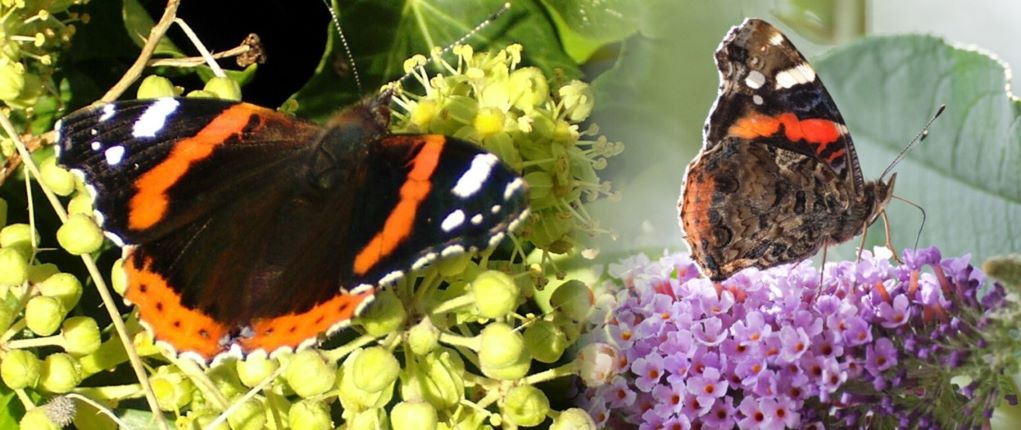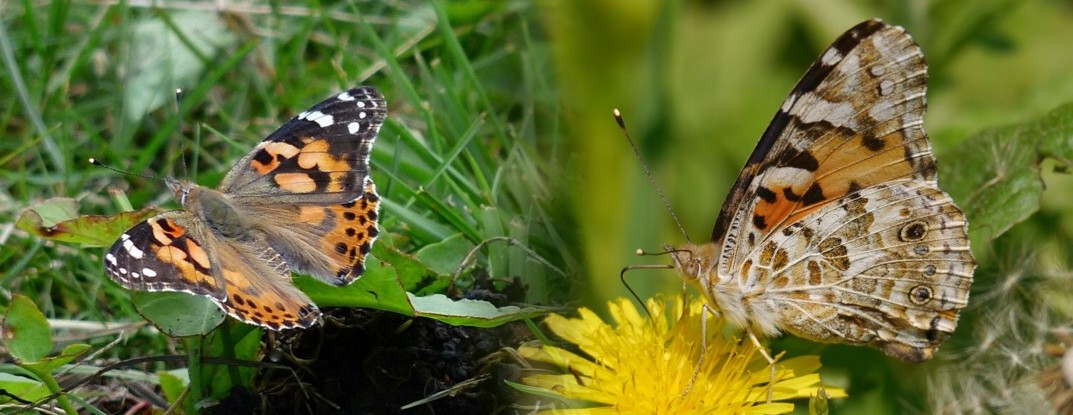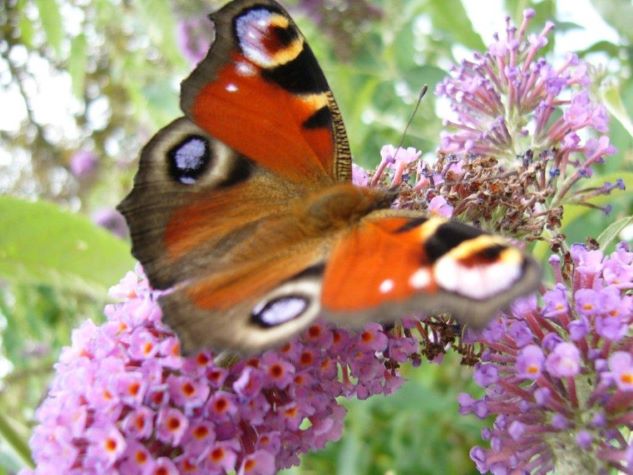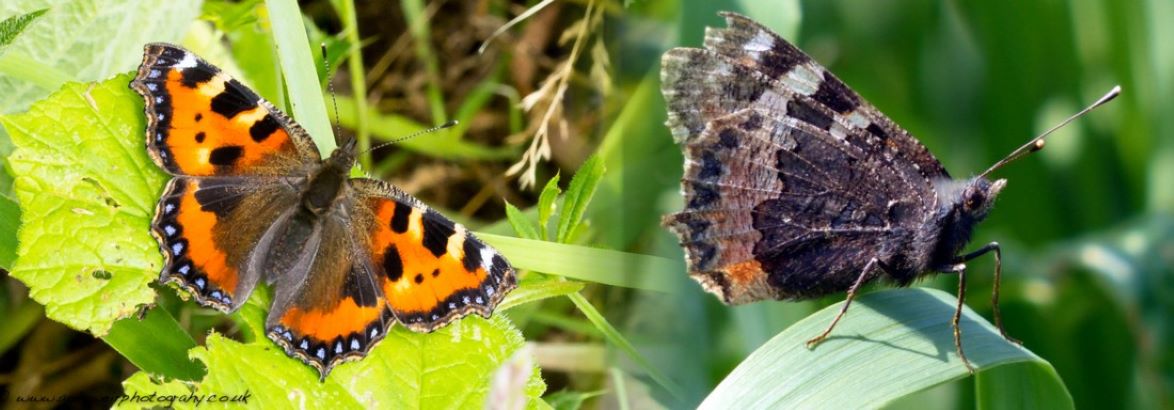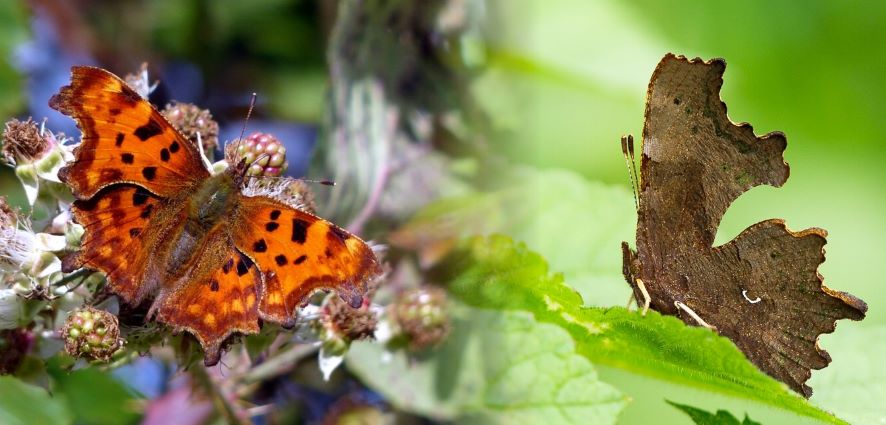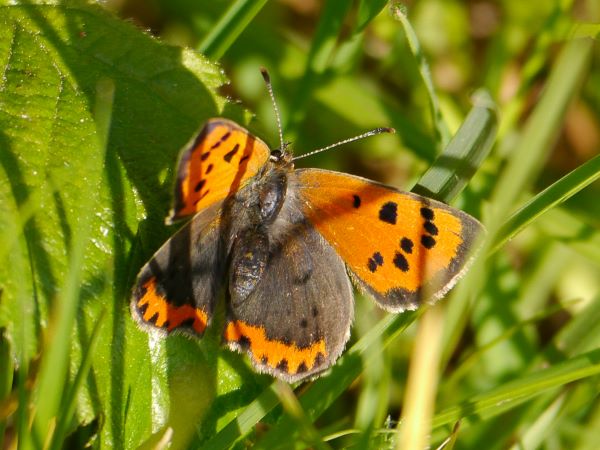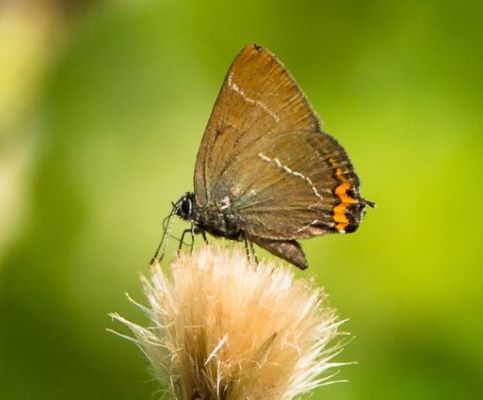Butterfly Species At Woolston Eyes
There are a total of 77 species of butterfly which have been recorded and accepted on the British List (Butterfly Conservation rev.8 16/03/2021). A combined total of 57 resident species, 2 migrant species, 5 extinct species and 17 vagrant species.
The varied habitats and relatively unpolluted environment make Woolston Eyes an excellent location for observing most of the more common species of butterfly to be found in the region. Whilst no rarities breed on the Reserve butterflies can be found in good numbers throughout the summer months. Woolston Eyes has recorded 27 species of butterfly, correct at 1st January 2024, 24 resident, 2 migrant and 1 vagrant with the majority recorded annually.
Woolston Eyes Systematic Butterfly List Rev. Dec2023 From this list, at present, 2003 appears to be a milestone in the recording of butterflies on the Reserve therefore, a copy of the article which appeared in the 2003 WECG Annual Report is accessible below.
The Butterfly species recorded at Woolston Eyes with photographs from the reserve, summary identification and status comments follow and more details of sightings and historical records of our butterflies can be found in the Woolston Eyes Annual Reports,
Photograph of a male from No.3 bed on 19/07/2015 by David Waterhouse, no image of female or underwing available
01 Small Skipper (Thymelicus sylvestris)
Identification A small butterfly (wingspan to 30mm) orange-brown in colour frequenting grassland. Males have a thinner angled scent brand, black line, in the centre of the forewing than the Large Skipper and similar Essex Skipper which has black tipped antenna and shorter finer black scent brand which runs parallel to the forewing edge.
Status Found in small numbers in grassy areas in all parts of the reserve. Flight period from June to August with a peak in July.
02 Essex Skipper (Thymelicus lineola)
Identification A small butterfly (wingspan to 30mm) with orange-brown upper wings and pale cream-yellow fringes very similar to and often found with Small Skippers. The Essex has black tips to the antenna Small Skipper has orange, best viewed head on for confirmation. The male has a fine, short black line (scent brand) in the centre of the forewing which runs parallel to the forewing edge and not angled to it as in the Small Skipper.
Status First discovered on the Reserve in 2023 in suitable habitat
Stitched photograph, left image of a male on No.3 Bed on 18/06/2016 by David Bowman, centre image of a female on No.1 Bed on 29/06/2015 by David Bowman but no image of underwing available
03 Large Skipper (Ochlodes sylvanus)
Identification A small (wingspan to 35mm) orange-brown butterfly. Males are distinguished by the thick dark angled band (sex brand) in the centre of the forewing with females being less conspicuous. The forewing colour on both sexes shows a chequered faint two-tone pattern on the upper and under wing unlike the similar Small and Essex Skipper. Faint orange spots on the underwing separates Large Skipper from the Silver-spotted Skipper.
Status Found in similar grassy habitat to Small Skipper but tends to emerge a week or so earlier. Recorded annually and can be found in small numbers in June to August.
Stitched photograph, left a male on 08/04/2014 No3 bed by David Waterhouse, centre a male underwing 11/04/2015 No3 bed by David Bowman, right a female 08/05/2016 No3 bed by David Waterhouse
04 Orange Tip (Anthocharis cardamines)
Identification A medium sized (wingspan to 50mm) butterfly the males are unmistakable with their white wings and orange wing tips but the females lack this splash of colour having dark grey-black wing tips and can be confused with other “whites”. The undersides of the wings which are mottled greenish are a good means of identification.
Status One of the earliest butterflies to emerge in the spring. Small numbers are present during April through June with a peak in May across the Reserve.
Stitched photograph, no male image available, centre image of a female from No.3 bed on 29/07/2013 by David Bowman and the right image of a female underwing from No.3 Bed on 30/07/2013 By David Waterhouse
05 Large White (Pieris brassicae)
Identification A large (wingspan to 70mm) butterfly, males are all white with dark grey-black wing tips whilst females are the same but additionally have two black spots and a black spot smudge on the forewings.
Status Never plentiful but can be found anywhere on the Reserve during the active period April through September. with peak numbers in May and August.
Stitched photograph from left to right images, a male by David Bowman 28/09/2013 No.4 Bed, a male underwing by David Waterhouse 22/06/2014 No3. Bed, a female by David Waterhouse 26/05/2013 on No3. Bed, no image of a female underwing
06 Small White (Pieris rapae)
Identification A medium sized (wingspan to 48mm) ‘white’ butterfly, the male is distinguished by the dark grey wing tips and single small grey/black spot on the forewing whilst the female has similar grey wing tips but two larger black spots on the forewing and both have creamy-white underwings.
Status Can be found across the Reserve in good numbers through the summer, active from April to September. with peaks in May and August.
Stitched photograph, left image probable male from No3 Bed on 15/06/2013 by David Bowman, no image of open winged specimens, right image female underwing by David Spencer on 18/09/2015 on No.3 Bed
07 Green Veined White (Pieris napi)
Identification A medium sized (wingspan to 50mm) white butterfly with one or more dark spots on the upper wings. Difficult to distinguish from Small White especially in flight. The grey-green lined veins on the underside of the wings are diagnostic. Sexes are similar but the subtle differences in colour and markings mixed with those of subsequent broods makes separation in the field difficult.
Status Present in good numbers during late spring and summer and active April to September.
08 Clouded Yellow (Colias croceus)
Identification A large, (wingspan to 62mm) unmistakable, golden-yellow butterfly with dark edge markings to the upper wings. Females are similar looking to males but have yellow submarginal spots in the dak edge markings of the upper fore and hind wings.
Status A rare migrant which could be seen from mid-summer onwards. Active April to October. Singles have been recorded in 2006, 2014 and 2022.
Photograph by Roy Peacock from No3 bed 2013 of female underwing
09 Brimstone (Gonepteryx rhamni)
Identification A large (wingspan to 60mm) butterfly. males have yellow upper and yellow-green under wings whilst females are paler and more greener hued. Both sexes have strong veining and a distinct scolloped wing shape which when closed is likened to the shape of a leaf.
Status Relatively uncommon but small numbers are seen annually mostly in April on emergence from hibernation. Also seen later in the summer when newly emerged butterflies are on the wing. Active April through September but as they hibernate over the winter individuals can be encountered in any month.
Stitched photograph, left image upper wing from No3. Bed on 18/08/2013 by Andrew Weir, right image underwing from No.3 Bed on 16/07/2013 by David Bowman
10 Speckled Wood (Pararge aegeria)
Identification A medium sized (wingspan to 50mm) dark brown butterfly with numerous whitish to yellowish spots on the wings. The forewings have up to a dozen and the hindwing have a row of four with black eye-spots on the lower edge. The underwings resemble the upper but the ground colour is slightly paler and the markings more cryptic. It is difficult to sex individuals in the field but generally females are more brightly coloured than males.
Status As this butterfly continues to expand its range northwards it is seen in increasing numbers and is very common on the Reserve. Seen across the reserve it prefers areas of dappled shade in and alongside wooded areas. Present between April and September with peak numbers in late summer.
11 Wall Brown (Lasiommata megera)
Identification A medium sized (wingspan to 46mm) butterfly, orange-brown with dark brown markings can be confused with the similar coloured Gatekeeper but is more heavily patterned which may cause confusion with the smaller fritillaries though it has much bolder and heavier marking. The sexes are similar but females have finer less thick dark markings than the males.
Status Once regularly seen on the Reserve in the 1980’s but with the decline in the national population this species has not been recorded since the late 1980’s possible 1990. In the UK their distribution has receded to coastal regions in isolated colonies although some movements are known with potential for recolonising suitable habitat.
12 Small Heath (Coenonympha pamphilus)
Identification A small (wingspan to 38mm) butterfly with upper wings mainly plain orange-brown with pale fringing around the edging and two small dark eye-spots towards the forewing tip. The sexes are similar in colour and markings but can be separated with experience. This butterfly always closes its wings at rest when the underwing eye-spot is visible but tucks the forewing behind the hindwing when roosting showing only the cryptic brown, grey and cream banding for camouflage.
Status Despite the ‘heath’ name it is found in a wide variety of habitats but is best looked for in sunny grassy areas. The last sightings on the Reserve were the single individuals located on No.1 bed 2002 and 2003. The species, although widespread throughout the UK, lives in discreet colonies and does not travel far however, individuals which do can recolonise suitable habitat. Where colonies exist the active period is May through September with the peak in July.
Stitched photograph, under-wing 09/07/2016, upper-wing 13/07/2016, both from No.3 Bed by David Bowman
13 Ringlet (Aphantopus hyperantus)
Identification A medium sized (wingspan to 52mm) butterfly with plain dark-brown-grey upper wings with white edge fringing and numerous typically small orangey circular eye-spots filled black with a small white centre. These spots however can be extremely variable in number, shape and size and even reduced to small white dots. Newly emerged individuals can look almost black with white wing fringes. Sexes similar but females general lighter on the upper side than males with usually larger ocelli (eye like spots) and yellower brown underwings than males.
Status This butterfly likes damp and partial shady habitats such as damp uncut grassland. In Northern areas it is found in more open and less shady environments than its more usual southern habitats. Bramble and Wild Privet flowers are favoured nectar sources for the butterfly. It was first recorded at Woolston when David Hackett found the species on the south bank of No.2 Bed on 1st July 2014 since when it has maintained a tenuous foothold and has become an annual inclusion on the records from 2019. The active period is mid-June to mid-August.
Stitched photograph, left image, a male by David Bowman on 20/07/2013 No.3 Bed, centre image female colouration type by David Waterhouse on 19/07/2015 on No.3 Bed and the right image of the underwing by Andy Weir on 18/08/2013 on N0.3 Bed
14 Meadow Brown (Maniola jurtina)
Identification A medium sized (wingspan to 55mm) butterfly with the upper wings a plain wash of brown with pale wing fringes and a black eye-spot with a white centre surrounded by a variable irregular patch of orange-brown on each forewing. The size and extent of the orange (fulvous) area of this species is variable between the sub-species but males have less extensive orange in the forewings surrounding the eye-spot than females. The underwing in both sexes are similar but with subtle differences.
Status Common from June to September with maximum numbers in July and August. Found in grassy areas, rough ground and scrubland in all parts of the Reserve.
Stitched photograph, left image of a male by Dave Bowman on 24/06/2017, center image, a female, by Andy Weir on 26/07/2016 and the right image of the underwing by Chris Monks on 27/06/2012 all from N0.3 Bed
15 Gatekeeper (Pyronia tithonus)
Identification A medium sized (wingspan to 47mm) butterfly with orange-brown upper wings enclosed by a wide dark-brown border with thin white edge fringes and black eye-spots in the forewings. The sexes are similar in colour but the male has a dark-brown distinctive band (sex brand) angled towards the eye-spot on the forewings.
Status Active from June through August it can be found in huge numbers in shrubby rough grassland during July and August. In good years more than a thousand can be present.
Photograph by Steve Dolan from No3 bed 2013
16 Dark green Fritillary (Argynnis aglaja)
Identification A large (wingspan to 69mm) butterfly with the upper wings an orange-ochre ground with black chequered markings, a band of black spots and band of pale orange-yellow tear drops bordered black along the trailing wing edges. The butterfly gets its name from the green hue to the underwings which are peppered with large silver spots. The sexes are similar in colouration but the female upper wings are generally paler in hue.
Status A rare visitor which is presumed not to breed locally. First recorded and photographed on 2nd August 2013 feeding on Buddleia on the south bank on No.3 Bed. The species has been recorded a number of times since in 2018 and 2020 in different areas of the Reserve but not always annually.
Stitched photograph, left image from the Canal Track by David Hackett on 24/10/2013 and the right image of the underwing on 30/07/2013 by David Waterhouse on No.3 Bed
17 Red Admiral (Vanessa atalanta)
Identification A large (wingspan to 72mm) striking butterfly, with solid black upper wings with a broad red band across the forewing and on the trailing edge of the hind wing and white spots and smudges in the forewing tips. Sexes are similar looking with subtle difference in the shade of the dark upper wing ground colour being slightly browner in females but easily confused with worn males and colour of later broods.
Status This common migrant and resident hibernator can be found in small numbers anywhere on the Reserve in any month but peaks occur in May and June with the arrival of migrants and on brood emergence in July and August with maximum numbers usually present in the autumn.
Stitched photograph, left image from No.3 Bed on 29/07/2013 by David Bowman and the right image of the underwing from No.3 Bed on 07/06/2016 by David Spencer
18 Painted Lady (Vanessa cardui)
Identification A medium sized (wingspan to 56mm) butterfly with orange-red ground colour in the upper wings marked with black chequering, spots and with black forewing quadrants marked with white spots.
Status This is another summer migrant active from April to October with variable annual numbers reaching the UK from May onwards. It favours open sunny areas especially where the food plants such as Thistles and Knapweed are common. The sexes are alike in the field and difficult to separate but females tend to have larger rounder abdomens than the males. This migrant species is very unpredictable and rarely seen in good numbers on the Reserve.
Photograph by Brian Ankers from No3 bed 2012
19 Peacock (Aglais io)
Identification A large (wingspan to 69mm) butterfly with a red and brown ground colour upper wing and spectacular four large eye-spots is unmistakeable. Sexes are similar and field separation is difficult but females are generally slightly larger than males.
Status Very common with good numbers in the spring following emergence from hibernation and also from late July when maximum numbers are usually found.
20 Camberwell Beauty (Nymphalis antiopa)
Identification A very large (wingspan to 88mm) butterfly with solid maroon upper wings with a ring of blue, generally circular or triangular, spots inside a broad cream border.
Status A very rare migrant, the most recent record of a single individual was on 28th June 2003 on No.3 bed although a possible sighting was recorded in 2006 which was noted as an influx year. Like many vagrants the species is not able to maintain a population as breeding takes place after hibernation and not enough butterflies survive the UK winters.
Stitched photograph, left image Andy Weir 18/07/2015, right image David Bowman 06/06/2013 both taken from No.3 Bed
21 Small Tortoiseshell (Aglais urticae)
Identification A medium large (wingspan to 56mm) butterfly with a striking orange ground wing colour, a necklace of blue spots along the wing edges and complex pattern of yellow, black and white markings is likely familiar to most and should not be confused with any other beside it’s larger, but very rare, cousin the Larger Tortoiseshell. Another species with the sexes looking similar in the field but anatomically, the females generally are slightly larger than males.
Status Present in good numbers on emergence from hibernation in April and May. Found across the reserve and often attracted to Buddleia. Maximum numbers normally occur in late summer. Peak counts coincide with brood emergence in July.
Photograph of a male from No.3Bed on 19/07/2015 by David Waterhouse, no image of female or underwing available
22 Comma (Polygonia c-album)
Identification A medium sized (wingspan to 60mm) butterfly with striking orange ground colour with dark markings has diagnostic scolloped wing edges. The underside is brown with cryptic shading and a white ‘C’ shaped line on the hind wing, noticeable when folded, resembles a dead leaf. The sexes are similar but can be distinguished with experience. The features are difficult to assess with individuals in the field or with worn specimens but females are slightly larger with less ragged wing edges and hind wings plainer looking and darker than the richer marbled males.
Status Reasonably common across the Reserve and seen in variable numbers from early spring to mid autumn. This species is resident and hibernates in leaf litter and individuals may be discovered but peak occurrence on brood emergence is July.
Photograph by David Waterhouse of a rather poor quality individual from No.3 Bed 31/08/2014
23 Purple Hairstreak (Favonius quercus)
Identification A small (wingspan to 39mm) butterfly difficult to observe as it tends to remain in the tree canopy, especially oak. The sexes are similar but have subtle colour and marking differences, males have purple-blue sheen to both upper fore and hind wings with dark, blackish borders and under wings with white lines and orange anal spots. Females have bluish, less purple, sheen to upper forewing only and underside markings as male but vestigial.
Status First discovered in 2011, this elusive species is found in the canopy of mature oak trees from July to mid-August. The colony now appears to be well established in oaks along the canal track between the ferry and the entrance to No.3 bed and on the south bank of No.3 bed. Individuals have since been observed in other areas of the Reserve and it is hoped the species range will spread. The best time to search for this species is on sunny evenings during its flight period. Patience is required as often only fleeting views are obtained.
Photograph by David Spencer from No4 Bed 18/04/2014
24 Small Copper (Lycaena phlaceus)
Identification A small (wingspan to 35mm) butterfly with forewings reddish-orange with black spots and wide brown border and hind wings brown with a reddish-orange band and black spots. Sexes are similar but, anatomically, females are often slightly larger than males.
Status Uncommon but seen annually in small numbers from May onwards. The highest ever count on a butterfly transect is of thirty. Butterflies can be found across the reserve in areas of shortish grass, including the canal track between the ferry and the entrance to No.3 bed. Active from May through September.
Photograph by Andy Weir from No.3 Bed 2013
25 White-letter Hairstreak (Satyrium w-album)
Identification A small (wingspan to 36mm) butterfly. Usually difficult to see detail in the field as the species habits the tree tops, Elm is principle larval food plant, and the closed wing posture at resting offers only underwing views. Sexes are similar, but female generally slightly larger and upper wing paler brown. Male also has small dark sex brand on upper forewing. The diagnostic feature of a fine white ‘W’ formed by lines on the underside of the hind wing is however visible.
Status A first record for Woolston Eyes on 27th July 2013. Although there are a number of colonies locally, notably at Rixton Claypits and Moore Nature Reserve, it was a surprise to find one at Woolston as this species is normally associated with Elm trees. There are few if any on the Reserve and this individual was seen on Thistles rather than in the tree canopy. It has been recorded since, but not annually. Active June to August.
Stitched photograph male taken 15/06/2013 on No.3 Bed, female taken 03/06/2017 on No.1 Bed by David Bowman
26 Common Blue (Polyommatus icarus)
Identification A small (wingspan to 35mm) butterfly, vivid blue in males with unbroken noticeable white wing fringes. Sexes are diamorphic with female upper wing colour being brown with a highly variable amount of blue and a border of orange spots inside the wing fringes. The underwings of both sexes have many white spots with dark centres and an orange wash more so in the females.
Status Variable numbers but usually encountered and can be found form May onwards in areas of short grass, preferably with Bird’s Foot Trefoil. Active from May to September.
27 Holly Blue (Celastrina argiolus)
Identification A small (wingspan to 35mm) striking bright blue butterfly similar to the more numerous Common Blue but the paler silvery blue underwing is full of black spots which distinguishes them. Sexes are easily distinguished, males with narrow black border inside the white wing fringe, females less vivid blue and much broader less defined black border and a row of black spots on hind wings.
Status An uncommon species at Woolston with only a few records each year. Active April through September with peaks in May and August.

